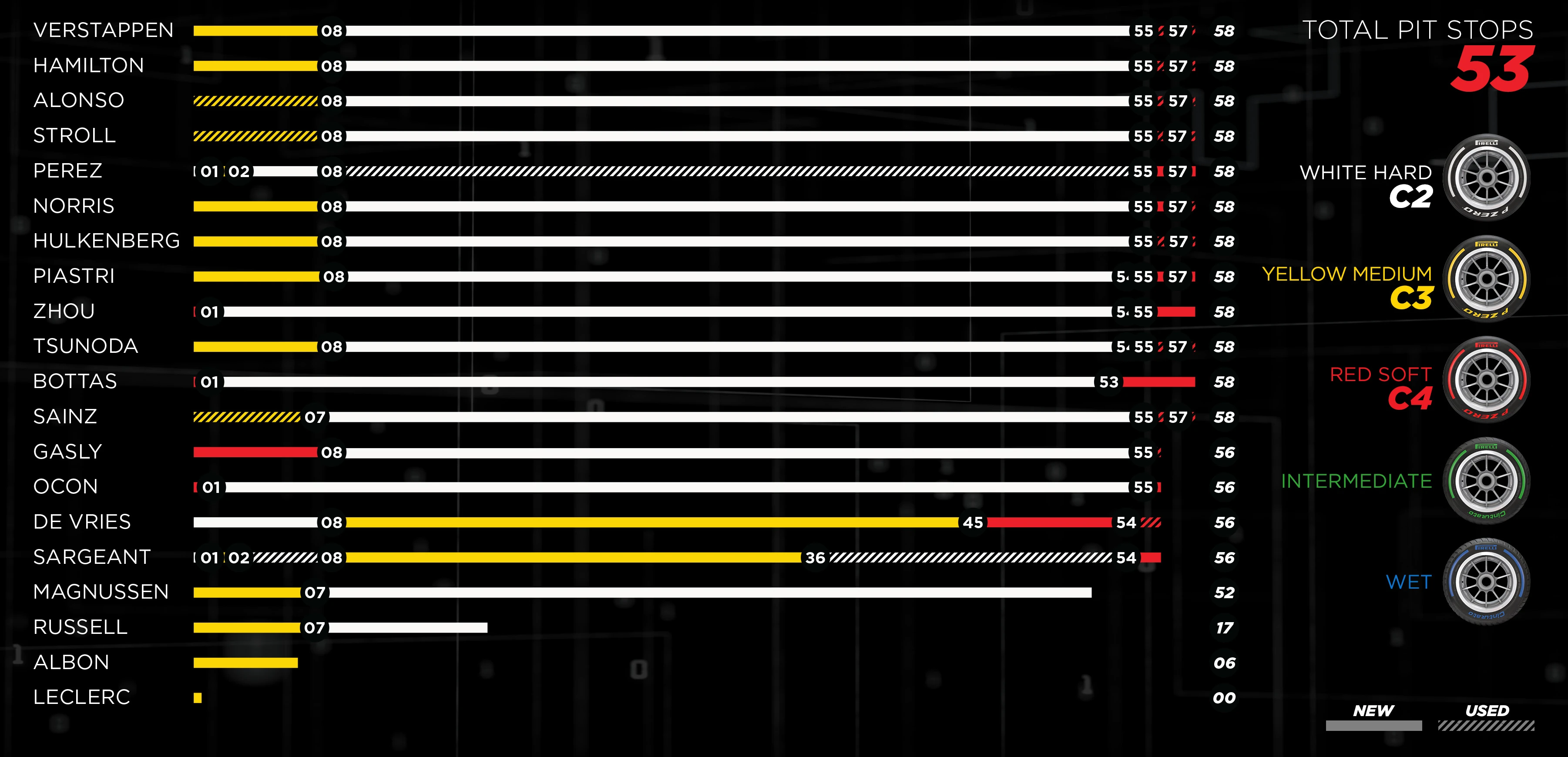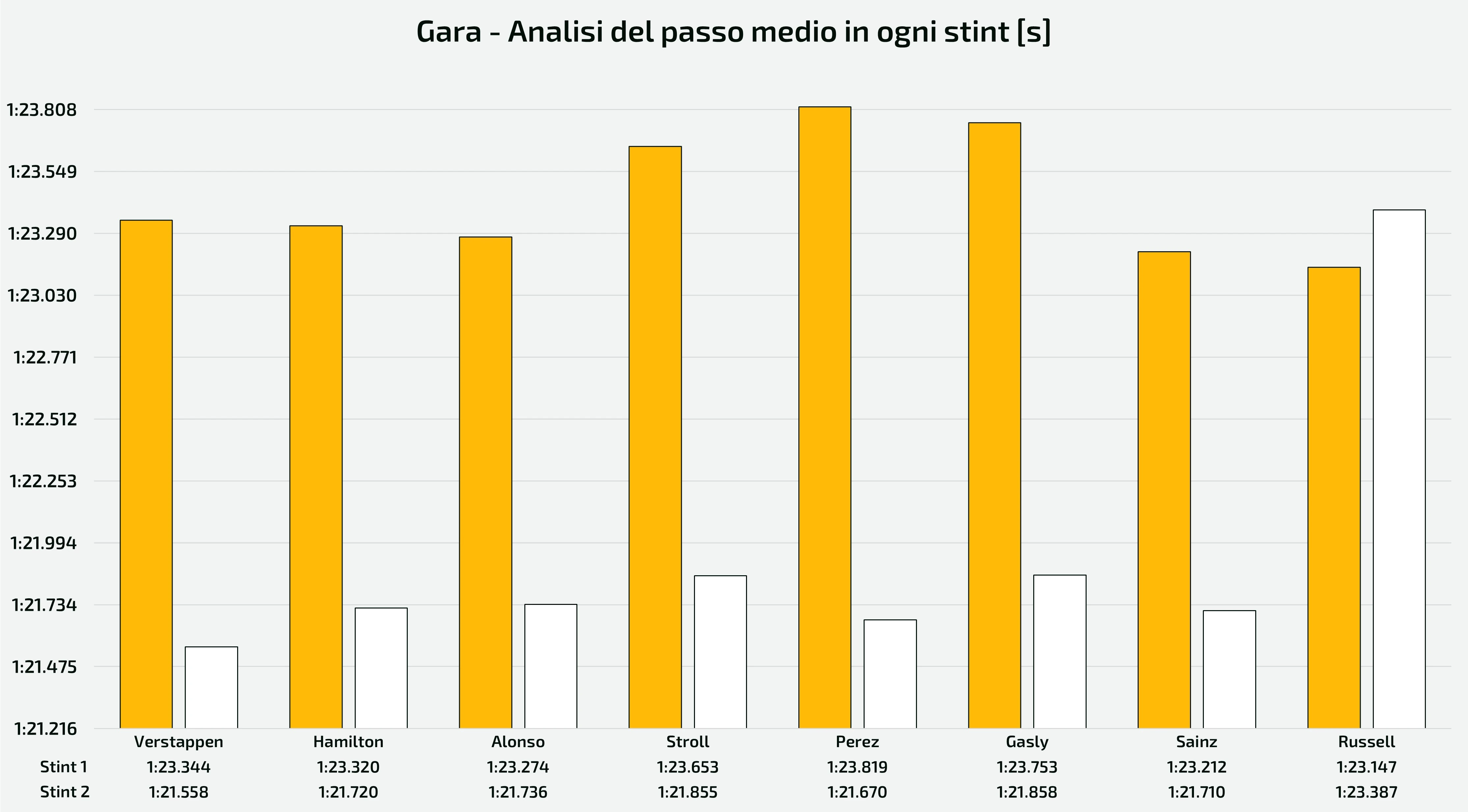
Verstappen wins a controversial Australian GP. Storm on the FIA and Liberty Media
What we saw in Melbourne in the final laps, I must say, has little to do with the Formula 1 that we all know and love. The key episode of the red flag triggered by Magnussen's accident, which then gave rise to a restart that was nothing short of chaotic (for a weird 2 laps race), leaves a deep scar in those who - like myself - would like see a sport and not necessarily a show.
Because sport can often be spectacular, but a show organized in such a way can never have anything to do with sport, in the noblest sense of the term.
Simon Galloway / Motorsport Images
We will come back to the episode mentioned, but not before having analyzed what happened in the "real" Grand Prix. In this regard, this analysis will focus on the facts that marked the storyline of the Australian race: if you would like an even greater degree of detail, I remind you that you can subscribe for only €5/month to the BuyMeACoffee page that I manage together to my colleague Rastro. There you will find all the graphs and telemetry relating to each session, from FP1 to the race, day by day during the F1 weekends. Bear in mind, anyway, that all the material provided there is in italian!
This is the final classification of the Australian GP:
- Max Verstappen (Red Bull)
- Lewis Hamilton (Mercedes)
- Fernando Alonso (Aston Martin)
- Lance Stroll (Aston Martin)
- Sergio Perez (Red Bull)
- Lando Norris (McLaren)
- Nico Hulkenberg (Haas)
- Oscar Piastri (McLaren)
- Zhou Guanyu (Alfa Romeo)
- Yuki Tsunoda (Alpha Tauri)
- Valtteri Bottas (Alfa Romeo)
- Carlos Sainz (Ferrari)
- Pierre Gasly (Alpine, DNF)
- Esteban Ocon (Alpine, DNF)
- Nyck De Vries (Alpha Tauri, DNF)
- Logan Sargeant (Williams, DNF)
- Kevin Magnussen (Haas, DNF)
- George Russell (Mercedes, DNF)
- Alexander Albon (Williams, DNF)
- Charles Leclerc (Ferrari, DNF)
The race predictions were respected, but have we seen the full potential of everyone?
The short answer to this question is no, and the reason is quite simple: the first red flag, due to the accident in turn 6 of Alexander Albon (author of a magnificent weekend up to that moment), forced everyone to restart with hard tyres, in the hope of being able to cover the almost 50 laps that were missing at that moment without further pit stops.

Pirelli Motorsport / Twitter
Being able to complete a stint of this length would have been impossible for anyone without recurring to a very careful tyre management, which is why we witnessed a "processionary" race, in which the only gasps were guaranteed by the comeback of Carlos Sainz, after having been relegated to the midfield due to the unfortunate timing with which the race was interrupted. However, when the positions settled down, with Verstappen ahead of Hamilton, Alonso, Sainz himself, Gasly and Stroll, it appeared quite clear that everyone had only one goal in mind: to get to the chequered flag without further tyre changes, given that there would have been no time to make up for the more than 20 seconds lost in the pit lane.

Analysis of the race stints of the protagonists of the Grand Prix
Observing the analysis of the average laptimes set by the front runners over the two stints into which the race can be divided, it is clear that there are no differences between the performances exhibited by Red Bull, Mercedes, Ferrari, Aston Martin and even Alpine. This is in absolute contrast with the results of the first two Grands Prix, and I'm sure that already in Baku we will see again a consistent advantage from the RB19s of Verstappen and Perez.
For the record, one of the big advantages that Max Verstappen enjoys, namely aerodynamic efficiency when the DRS is on, came into play on lap 12, when Max passed the Mercedes of Lewis Hamilton - who had overtaken him at the start of the race - with absolute ease.
Mark Sutton/Motorsport Images
Lewis Hamilton wasn't the only one to overtake Verstappen on the opening lap, as the race lead was in the hands of his teammate George Russell. Things seemed to be going well for the Mercedes duo, who were implementing a rather clever tactic: Hamilton deliberately stayed within the 1-second range of Russell to take advantage of the DRS in the 4 designated areas of Albert Park, but not to attack him! His only purpose was in fact to defend himself from Verstappen's monstrous top speed behind him.
The trick was working quite well, until, concurrently with Alex Albon's accident, the Mercedes strategists had decided to bring George into the pits, being sure that the Safety Car period would not have turned into a red flag. Unfortunately for them (and for the Ferrari of Carlos Sainz, who had followed Russell like a shadow into the pits), the race direction surprisingly opted for the interruption with a red flag, in order to clean up the track. Many drivers disagreed with this choice, and I totally agree with them…
Mark Sutton/Motorsport Images
At the restart, Russell's race didn't last long: a (rare) failure of the Mercedes Power Unit put an end to his podium ambitions, concluding a weekend that started well and ended very badly, but not through his fault!
What could Leclerc have done more than Sainz?
At Ferrari, the Grand Prix was lived with the hopes of a good result merely relying on Carlos Sainz, given that Charles Leclerc's race had in fact ended on the first lap, after a contact in turn 3 with the innocent Lance Stroll. Finding himself in the gravel, it would have been impossible for Charles to restart; and indeed it was. Second race out of three ended with zero points for the Monegasque driver, who is facing the worst start to a season since he has been in Formula 1.
Lionel Ng / Motorsport Images
Throughout the Melbourne weekend we saw a Leclerc unable to keep his teammate Sainz at bay. The Spaniard even preceded him in qualifying - net of what happened from a procedural point of view, which we won't dwell on.
If there is one constant in Leclerc's short career so far, it is his tendency to raise his driving level when the race win is within his reach; on the contrary, however, when the car does not allow him to express his full potential, it seems that the "spark" that allows him to get out those crucial tenths of a second is not triggered in him. This is not meant to be a criticism of Charles, as he is certainly not the first driver to suffer from such a mindset: last but not least, Sebastian Vettel also had this "switch" mentality, if we want to call it that way.
It is therefore up to Ferrari to provide Leclerc with a car that can satisfy his legitimate ambition of becoming World Champion.
Chaotic race ending, first points of the year for Norris, Hulkenberg, Piastri, Zhou and Tsunoda
So let's come to the controversial end of the race, already anticipated at the beginning of this article: having said about Magnussen's accident and the consequent red flag, what happened in the following minutes?
The race saw another restart for which all the drivers chose Soft tyres, having to complete only 2 laps; obviously it is easy to understand how a race situation like the one described was experienced by the drivers as the possibility of make amends for a bad Sunday up to that point, or the fear of losing what had been achieved by fighting for 56 laps of the real race. Whatever the mindset was, the only way to face those 2 laps was to push hard, hoping not to get the worst of any - and very probable - incidents.
When the lights went out, it's no surprise that we witnessed:
- Verstappen who does not miss his starting slot by a whisker, positioning himself so much ahead of the white line as to be at risk of a penalty;
- A rookie maneuver by Carlos Sainz, who nearly puts an innocent Fernando Alonso out of the race in turn 1;
- Logan Sargeant who violently rams Nyck De Vries in turn 1;
- The two Alpines of Pierre Gasly and Esteban Ocon self-eliminating in turn 2;
- Sergio Perez who cuts the first two corners, running on the grass;
- Lance Stroll who, a little further on, in turn 3, makes a totally unforced error and goes into the gravel;
Glenn Dunbar / Motorsport Images
In short, total chaos. And how does race direction reply to all of this? By deciding for another lap under the Safety Car, believing they were remedying the disaster that took place, thus proposing the usual pleasantries (photos under the chequered flag). Too bad that in all of this the two Alpines go home with zero points, victims of an accident made irrelevant as it occurred in a portion of the race that had no influence on the result (the starting order behind the SC was in fact the one prior to the madness of the restart described). Just as absurd is, for the same reason, the 5-second penalty imposed on Carlos Sainz: his maneuver on Alonso was certainly to be sanctioned, but we reiterate that the context in which it occurred was made irrelevant by the race direction itself!
I want to close this article by giving you the opinion of someone who has now seen a huge number of F1 races: making every moment of a Grand Prix spectacular by using tricks such as DRS or "on demand" neutralizations, racing on circuits as wide as highways and with infinite straights in the center capitals (perhaps in "rogue states") doesn't make the event better, but it disfigures it and debases what makes Formula 1 so magical: the ruthless competition between talents who can push their single-seaters to the limit more than anyone else in the world. This would be - for me - more than enough.
Index
Verstappen wins a controversial Australian GP. Storm on the FIA and Liberty Media